In this post, artist and teacher Rachel Mercer shares a structured approach to enable students to create a series of drawings which explore line and tone, dark and light from a life model.
“One of the great things about life drawing is that it allows a student to practise their drawing in a controlled environment.
The life room is like a theatre and the teacher/ facilitator has the power to direct the eyes and thoughts of the audience. In this class I will demonstrate a simple set-up which restricts the amount of visual information that can be observed and recorded. I believe this approach makes students look in a particular way and therefore focus their attention on a particular aspect of drawing.
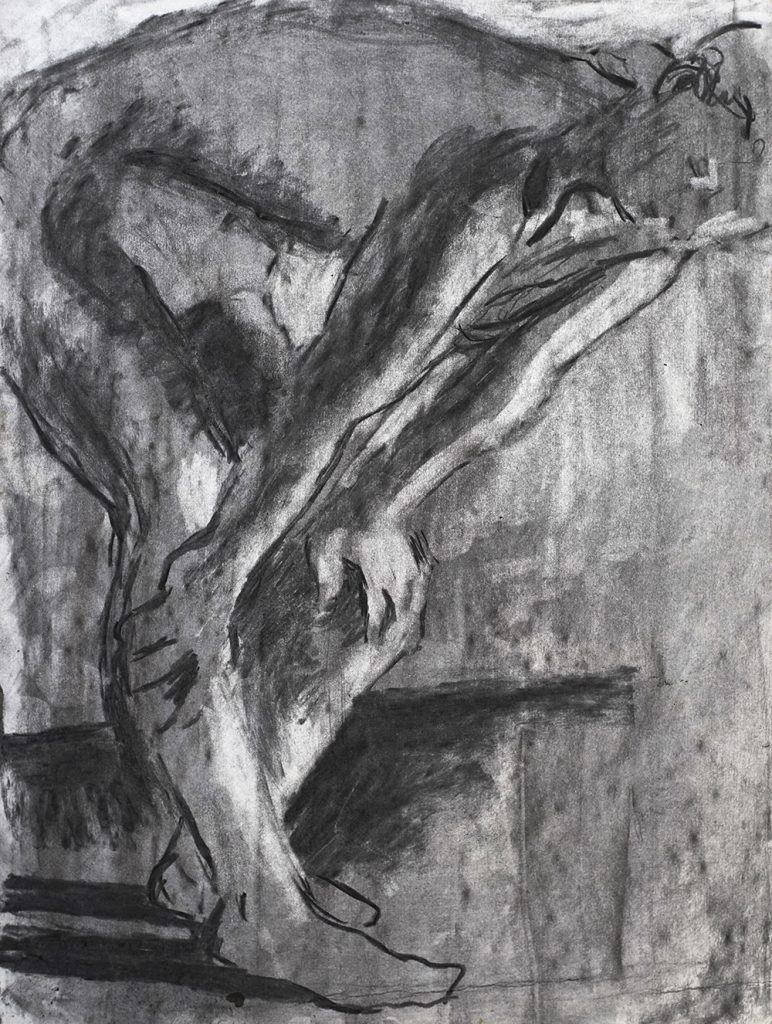
Materials: pencils, rubbers, black paper, mid-tone paper (blue or grey), white paper, white chalk and charcoal.
(I recommend A3 or A2 paper when using charcoal/ chalk)
Set up: Every life drawing studio, improvised or permanent, is different so choose between two set ups depending on your needs:
- Basic Windows blacked out, the model stands with a spot-light/lamp shining on the wall behind them so that their figure is silhouetted.
- Advanced The model is back-lit and stands behind a semi-transparent screen which can be improvised from a bed sheet or large roll of tracing paper/ rice paper. The silhouette is projected onto the screen.
Learning Objectives
There are 4 main learning experiences that I think these exercises offer the student:
- To draw the silhouette of the figure using line
- To draw tonally – considering tonal values and how the tone of the body is relative to the tonal vaules of the background. Observing areas/shapes of light and dark and considering how to record these WITHOUT the use of line.
- To consider how a line is created when two areas of tone meet.
- To using the side of the charcoal and chalk to block-in tonal areas.
Outcomes
- Task 1: 5 Quick drawings using line to create a silhouette
- Task 2: 2 drawings using white chalk on black paper to explore light
- Task 3: 2 drawings using charcoal and white chalk on mid-tone paper to explore light and dark
- Task 4: 1 drawing using subtractive and additive process using charcoal on a charcoal mid-tone to bring the whole together.
Session Structure. (2 hours total)
Task 1 (20 mins approx)
In this exercise I introduce the principle of drawing a silhouette (see glossary below). I invite the students to use pencil, and to try to record the outer shape of the model using a single line. I generally encourage the students to make 5 silhouette drawings, the poses getting progressively shorter as the students tune in to the activity. (I normally do something like: 10 mins, 5 mins, 3 mins and 1 mins x 2)
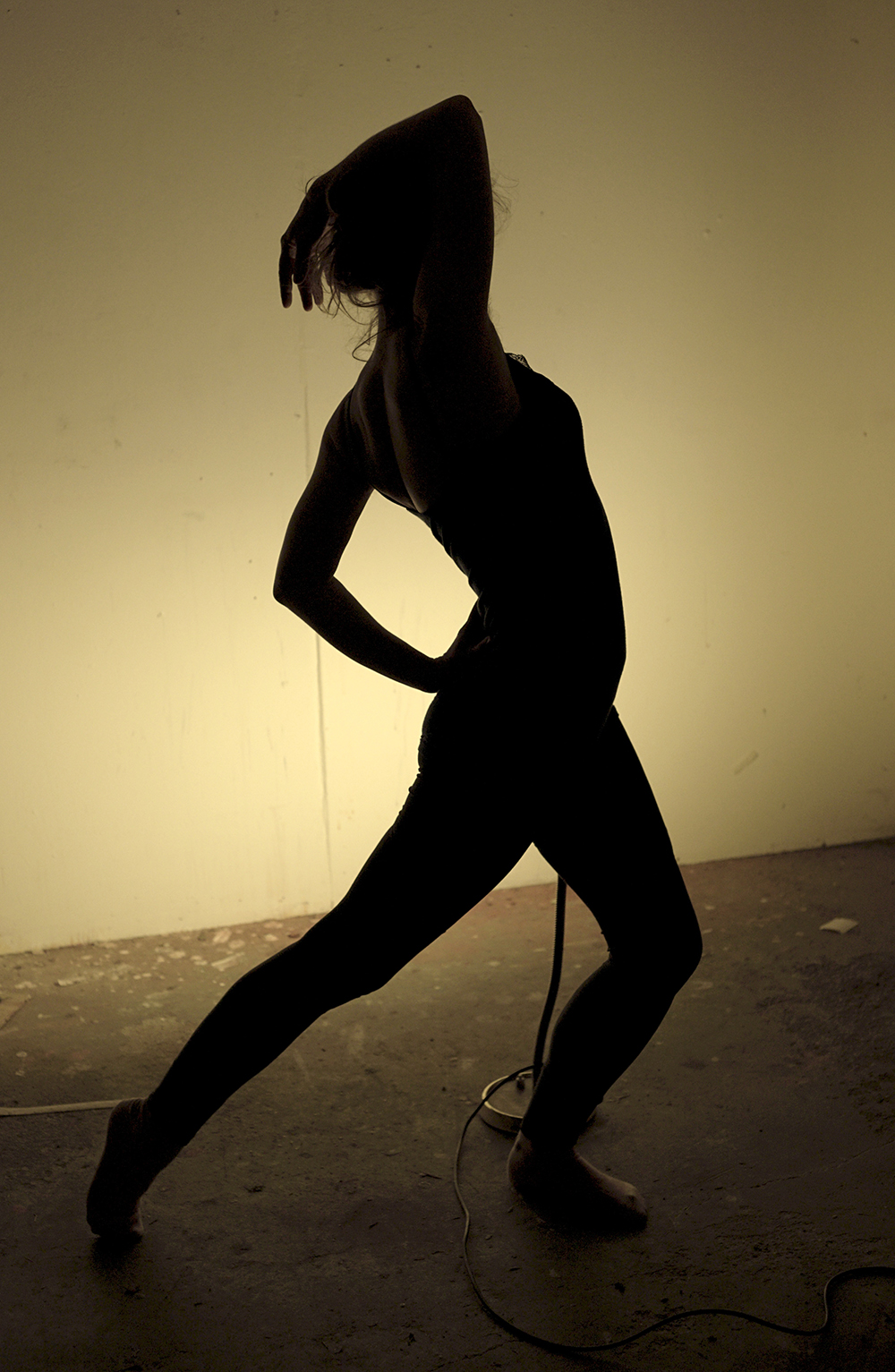
TIPS As the poses get shorter students are required to move more quickly. To draw or sketch the wrist must be loose and active. Students should be encouraged to drag their line fluidly across the paper. As the poses get shorter students should be encouraged to look less at their drawing-hand and be more concise in their mark-making. This exercise helps to improve hand-eye coordination.
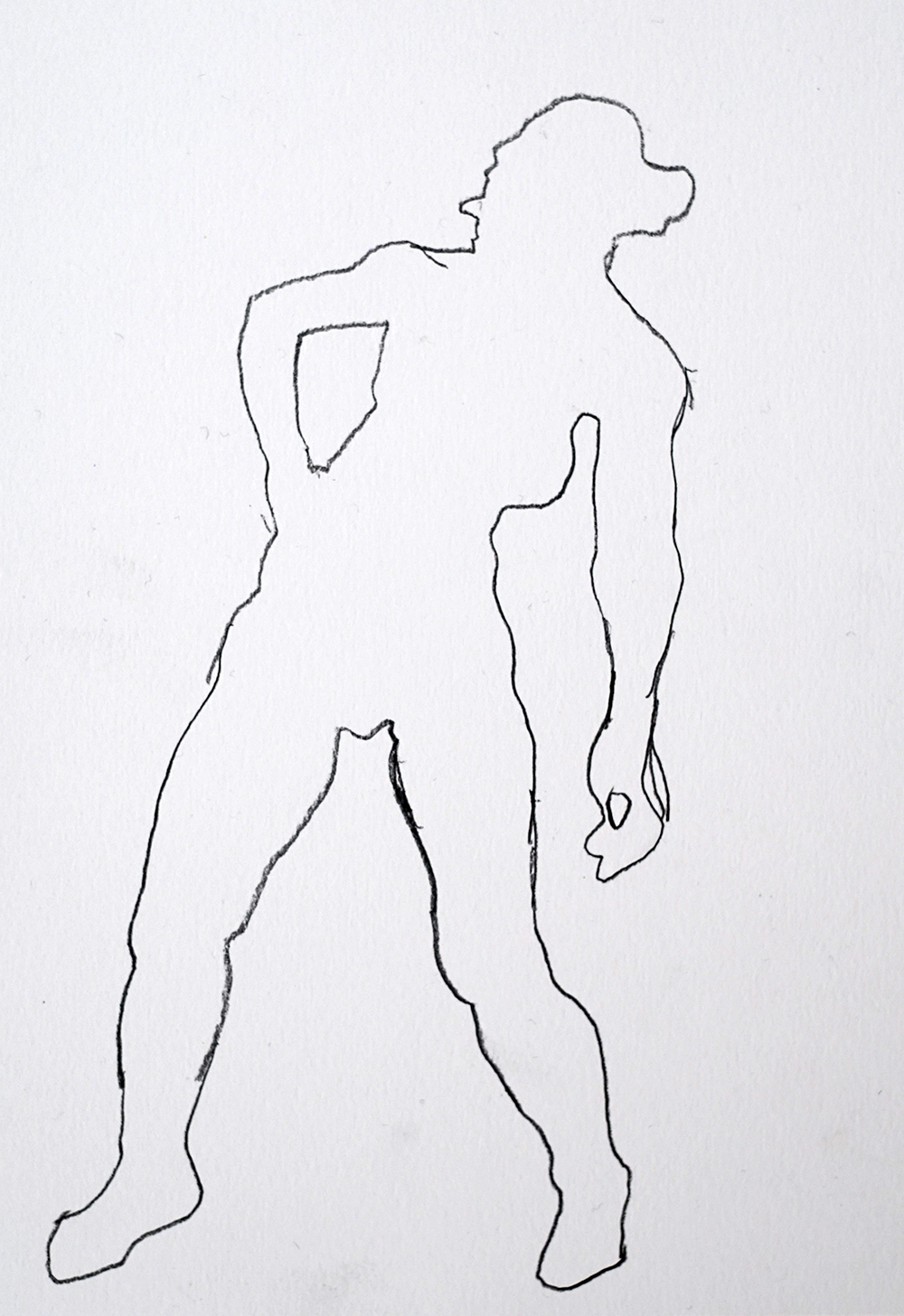
A silhouette is one of MANY ways of simplifying the body. Task 2-4 below look at creating a simple visual impression using tone. Students should be encouraged NOT to use line and instead to notice the shapes made by the light on the body. When thinking about tone it is imperative to consider the tonal values behind the model.
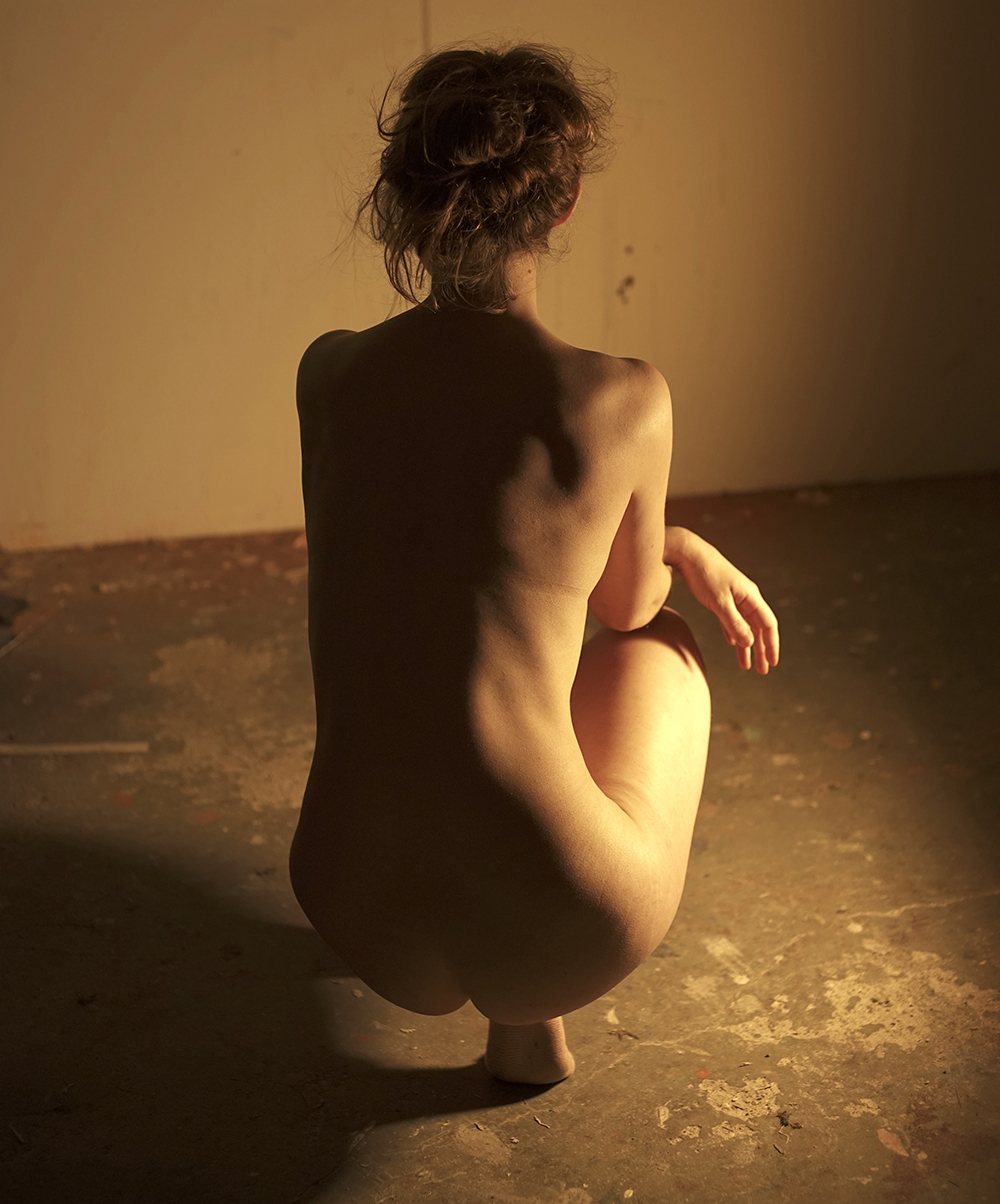
Task 2: (30 mins approx)
Move the spot-light so that it shines from one side of the model. On black paper invite the students to make 2 x 10 minute drawings using white chalk, this time NOT using line but instead considering where the lightest areas of tone are. The lightest areas will appear as separate and distinct shapes on the page.
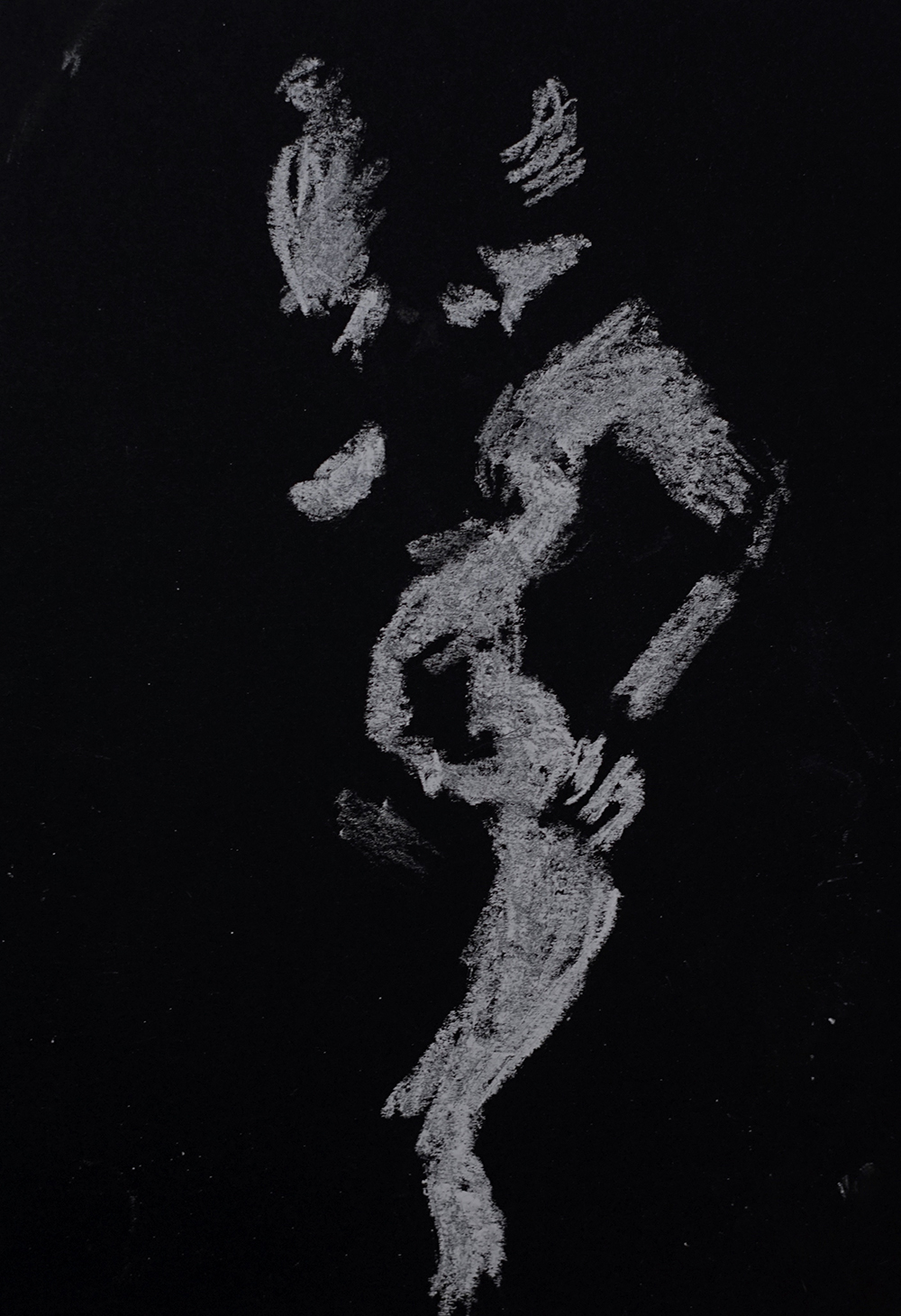
Task 3: (30 minutes approx)
On mid-tone paper, make 2 x 15 minute drawings using charcoal for the darkest areas and white chalk for the light areas. This drawing exercise challenges the students to separate the tones into THREE main vaules. #1 white chalk #2 mid-tone paper and #3 black charcoal. They must include the tone of the background.
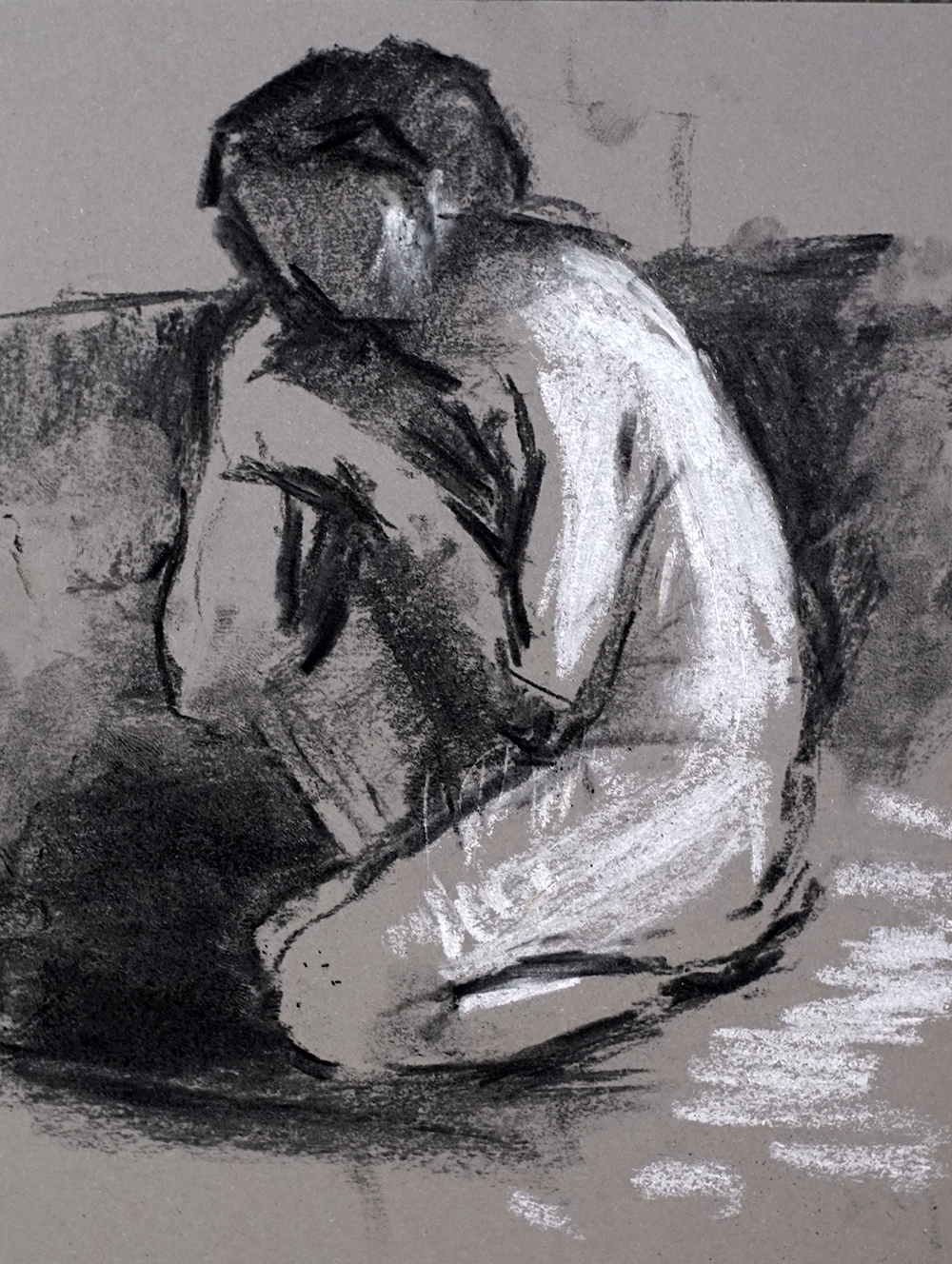
Task 4: (I recommend 20- 30 minutes for this and if you have time do a second one!)
Students will use the side of their charcoal to cover their paper to create a mid-tone.
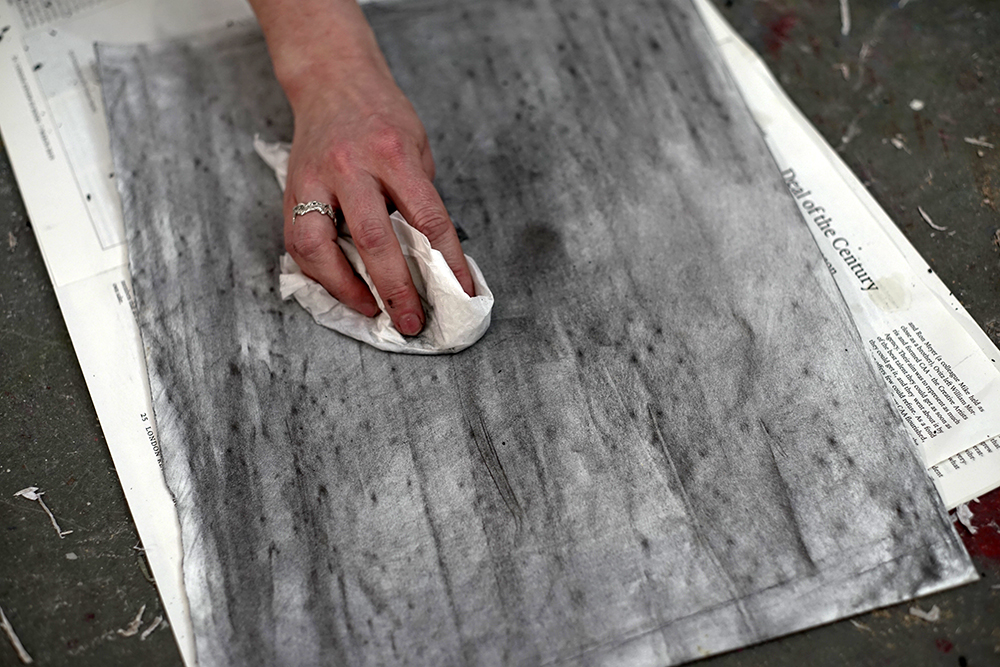
Using their rubber students will rub into their mid-tone background to draw their lightest areas. Next add the darkest areas using the charcoal. The student must then consider the mid-tones that they can observe on the body. Because the charcoal is very powdery it can be smudged and blended to create various values of mid-tones. To sustain the drawing the student must move the charcoal around, erase and redraw.
TIP Use a tissue or piece of paper to smudge, fingers and hands are naturally oily so will make the charcoal stick.
Drawing at home? You can easily recreate this life class at home. In a dark room use a bedside lamp and draw yourself in the mirror; full length, half length or just a portrait – whatever you can manage!”
Glossary
Silhouette – A two dimensional representation of an object created when it is back-lit. A shadow is also a silhouette projected onto the ground or wall.
Mark- making – The different qualities of lines textures and patterns you can create in art.
Tone/ Tonal Value– referring to the light and dark areas. Tone can be explained/simplified in terms of a steps, intervals or numerical values. For Task 3 I ask students to think about 3 tonal values and for Task 4 I might ask them to consider 5 tonal values: # 1 being the lightest tone and # 5 being the darkest. Therefore #2 #3 #4 are all various degrees of mid-tone.